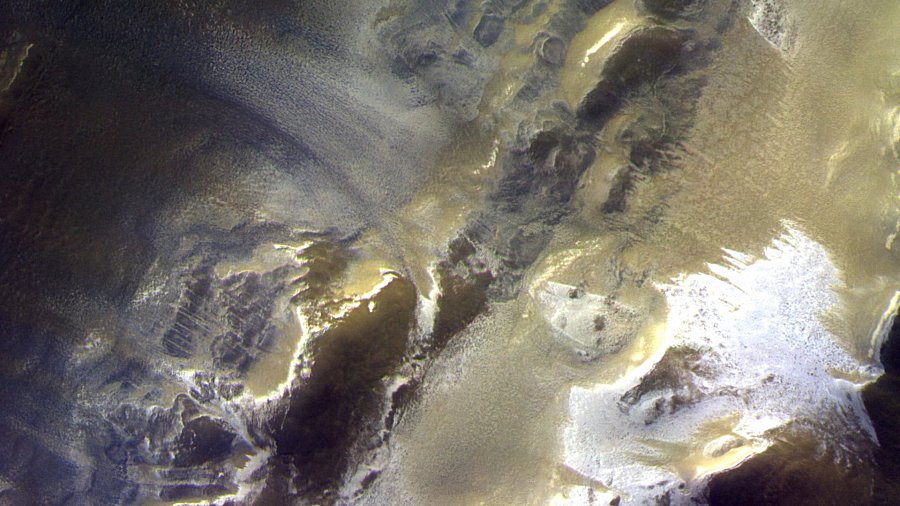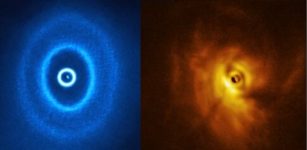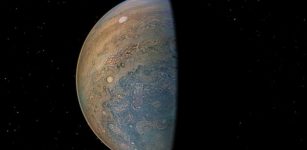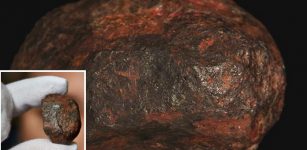Korolev Crater On Mars As Newly Photographed By ExoMars Trace Gas Orbiter
MessageToEagle.com – Stunning image, which features part of an impact crater on Mars is among the first images of the Red Planet by the ExoMars Trace Gas Orbiter that were sent to Earth.
The image captures a 40 km-long segment of Korolev Crater located high in the northern hemisphere. The bright material on the rim of the crater is ice.

The spacecraft arrived in a near-circular 400 km altitude orbit a few weeks ago ahead of its primary goal to seek out gases that may be linked to active geological or biological activity on Mars.
“We transmitted new software to the instrument at the start of the test phase and after a couple of minor issues, the instrument is in good health and ready to work,” says the camera’s principal investigator, Nicolas Thomas from the University of Bern in Switzerland, in a press release.
The image is assembled from three images in different colours that were taken almost simultaneously on 15 April.
“We aim to fully automate the image production process,” says Nick. “Once we achieve this, we can distribute the data quickly to the science community for analysis.”
The orbiter’s camera is one of four instruments on the Trace Gas Orbiter, or TGO, which also hosts two spectrometer suites and a neutron detector. The spectrometers began their science mission on 21 April with the spacecraft taking its first ‘sniff’ of the atmosphere. In reality, the sniffing is the spectrometers looking at how molecules in the atmosphere absorb sunlight: each has a unique fingerprint that reveals its chemical composition.
A long period of data collection will be needed to bring out the details, especially for particularly rare – or not even yet discovered – ingredients in the atmosphere. Trace gases, as hinted at from their name, are only present in very small amounts: that is, less than one percent of the volume of the planet’s atmosphere. In particular, the orbiter will seek evidence of methane and other gases that could be signatures of active biological or geological activity.
The camera will eventually help characterise features on the surface that may be related to trace gas sources.
“We are excited to finally be starting collecting data at Mars with this phenomenal spacecraft,” says Håkan Svedhem, ESA’s TGO project scientist. “The test images we have seen so far certainly set the bar high.”
MessageToEagle.com










